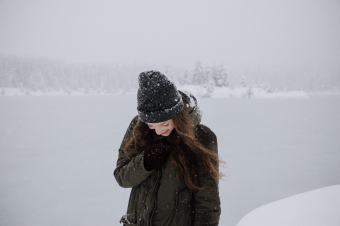Avoid getting caught by energy-hogging habits that will increase your heating bill this fall! These are daily habits you can perform to increase your savings while still maintaining optimal comfort in your home.
Let’s look at how to best manage your heating bill this fall season.
A Note about the Building Envelope and Energy Bills
The physical structure of your home influences your energy bills. We have previously explored how your building envelope can be vulnerable to gaps or inefficiencies which can impact your energy bill and home comfort.
An EnerGuide home evaluation involves assessing your home from basement to attic. It will measure the airtightness of your home and help you to identify any deficiencies in your insulation or possible points of air leakage around walls, ceilings, and foundations.
Conducting a home energy evaluation is a good place to get started if you are very concerned about the performance of your building envelope or if you are planning to do renovations in your home.
Your Homeowner Habits and Energy Bills
Here are four tips to help you reduce your energy bills in the colder Canadian seasons.
1. Moderate the temperature based on the time of day and your heating needs.
Automated or ‘smart’ thermostats can help by taking much of the guesswork out of manually adjusting the temperature each day.
You can lower the temperature when you are away from home. Although your furnace will run for longer when it comes out of ‘setback’ mode, you will still save money by turning it down while away.
You can also reduce the temperature overnight to benefit your quality of sleep. Reduce it to between 62° F (16° Celsius) to 66° F (18° Celsius) for optimal sleeping conditions. Keeping your home’s temperature low while you are tucked under the blankets in bed can save you a great deal of money in the long run.
The optimal day time temperature that you set in your home will vary depending on the occupants of the home and their unique needs. 68° F (20° Celsius) is an ideal temperature. You can experiment by raising and lowering by one or two degrees until you find the ideal temperature that appeals to everyone.
2. Engage with your windows.
Look at your south-facing windows. Are they being used to full advantage?
You can open these windows during the day to allow sunlight to naturally heat your home. You can also close them at night to add an additional layer of insulation.
If you want further protection for your windows, add clear plastic sheets to the inside of your window frames to reduce infiltration of cold outdoor air.
3. Be sure to schedule regular maintenance for your heating systems!
This tip is key. Schedule regular service with us here at Applewood Air to ensure that your heating system will operate smoothly all winter long.
We will make sure that your system is ready for the cold season ahead and identify ways to increase the performance and efficiency of your system, such as replacing your air filter.
4. Conserve heat from your fireplace.
If you are lucky enough to have a fireplace in your home, keep more of this heat indoors! Ensure that the seals around the fireplace are as snug as possible. You can also install a heat-air exchange system to help blow warmed air back into your living spaces.
Our Applewood Air technicians are experts at installing and maintaining fireplaces in the home. We can provide you with tailored advice for your fireplace situation to ensure that it helps keep you warm all winter long.
Beyond the building envelope and its impact on your heating bills, there are four key habits that you can undertake as a homeowner to reduce your energy bills. Applewood Air can help you along every step of the way. Contact us anytime for an obligation-free quote or expert advice.





